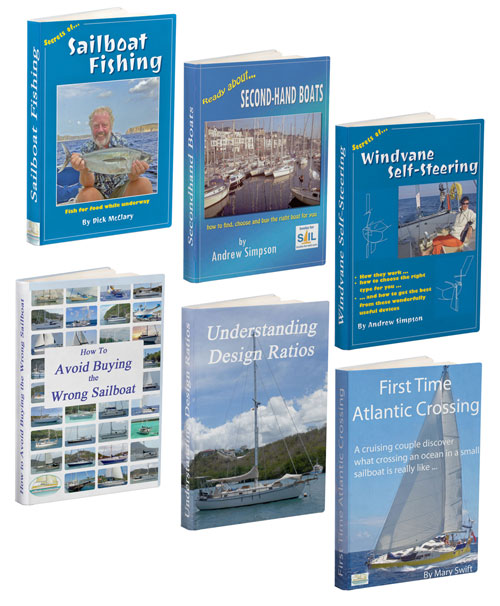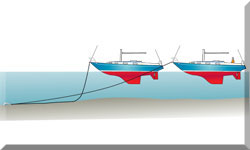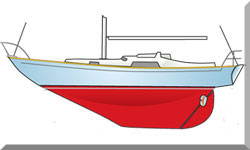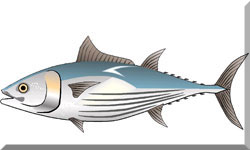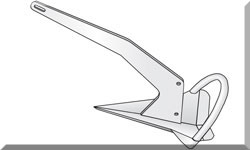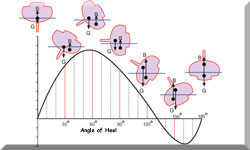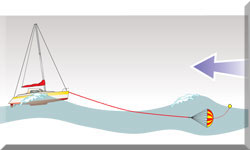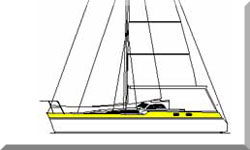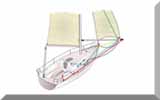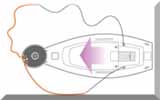Recent Developments in Sailcloth Materials
Sailcloth materials play a critical role in the performance and durability of sails. With advancements in technology, the options available for recreational sailors and sailboat owners have significantly expanded. This article delves into the latest developments in sailcloth materials, offering insights into the innovations that are shaping the future of sailing.
Evolution of Sailcloth Materials
The journey of sailcloth materials has been one of continuous evolution. From the early days of using natural fibres like cotton and flax, sailmakers have transitioned to more advanced synthetic materials. This shift was driven by the need for greater durability, resistance to environmental factors, and enhanced performance.
The introduction of materials such as Dacron revolutionized the industry, providing sailors with a robust and cost-effective option. However, the quest for improvement didn't stop there.
Modern advancements have brought forth a new era of sailcloth materials, each offering unique benefits to meet the diverse needs of sailors.
Cutting-Edge Sailcloth Technologies
Sailcloth technology has come a long way, and there are some exciting advancements in the field. Here are a few examples of cutting-edge sailcloth:
- Contender Sailcloth: Contender UK offers a range of high-performance sailcloth and fabrics, including their innovative Contender C360 cutting-edge technology. They provide precision plot and cut services for a wide range of fabrics and sailcloth.
- Aerotech by North Sails: North Sails has introduced AEROTECH, a revolutionary high-performance woven downwind sailcloth. This material leverages cutting-edge innovations from ultralight gliders, sport parachutes, and wind-driven sports like foiling kites and wings. AEROTECH is designed to deliver unmatched durability, low stretch, and enhanced shape-holding properties.
- Palma Tec by Challenge Sailcloth: Challenge Sailcloth's Palma Tec line uses UPE (Ultra High Molecular Weight Polyethylene) fibers, which are known for their low stretch, durability, and UV resistance. These fabrics are designed for modern cruising boats and offer excellent performance and sail shape retention.
- Bainbridge Innovations have introduced new products such as V-MAX Nylon and Mega Panel Cruise. V-MAX Nylon is known for its high strength-to-weight ratio, making it ideal for performance sails. Mega Panel Cruise, on the other hand, offers superior durability and resistance to environmental factors, making it a top choice for cruising sails.
These innovations highlight the continuous efforts of manufacturers to push the boundaries of sailcloth technology.
Material Properties and Performance
The performance of sailcloth materials is largely determined by their properties. Materials like polyester, nylon, ultra PE, carbon fibre, and aramid each have distinct characteristics that influence their behaviour on the water.
- For instance, polyester is known for its excellent UV resistance and durability, making it a reliable choice for cruising sails.
- Nylon, with its lightweight and flexibility, is commonly used in spinnakers.
- Ultra PE materials like Spectra and Dyneema offer high strength and minimal stretch, making them ideal for high-performance sails.
- Carbon fibre and aramid are often used in racing sails due to their exceptional stiffness and strength.
Understanding the properties of these materials helps sailors make informed decisions about their sail choices. Factors such as strength, stretch resistance, UV resistance, and abrasion resistance play a crucial role in determining the performance and longevity of sails.
Environmental Impact and Sustainability
As environmental awareness grows, the sustainability of sailcloth materials has become a significant consideration. Traditional materials like polyester and nylon have a considerable environmental footprint, prompting manufacturers to explore eco-friendly alternatives.
Recent developments in sustainable sailcloth production include the use of recycled materials and biodegradable fibres. Companies like Sailmakers International are leading the charge with innovative products that minimize environmental impact without compromising performance.
By choosing sustainable sailcloth options, sailors can contribute to the preservation of marine ecosystems while enjoying the benefits of modern technology.
Maintenance and Care
Proper maintenance and care are essential for prolonging the lifespan of sails. Different materials require specific care routines to maintain their performance and durability.
For instance, polyester sails benefit from regular cleaning and protection from prolonged UV exposure. Nylon sails, on the other hand, require careful handling to prevent damage from stretching. Advanced materials like ultra PE and carbon fibre need specialized care to maintain their structural integrity.
Implementing best practices for sail maintenance ensures that sailors get the most out of their investments. Regular inspections, proper storage, and timely repairs are key to maintaining sail performance and longevity.
Cost and Value Analysis
Investing in high-performance sailcloth materials often comes with a higher initial cost. However, the long-term benefits can outweigh the expense. Advanced materials like ultra PE and carbon fibre offer superior performance and durability, resulting in fewer replacements and repairs over time.
A detailed cost comparison of different sailcloth materials can help sailors understand the value proposition of their investments. Factors such as initial cost, maintenance requirements, and expected lifespan should be considered when evaluating sailcloth options.
.........................
I wrote this article using GPT-4, OpenAI’s large-scale language-generation model, as a research assistant to gather information, summarize research findings, and provide suggestions for the content and structure of the article.
Dick McClary, creator and owner of sailboat-cruising.com
.........................
Recent Articles
-
Wheel-Steering Autopilots: Your Questions Answered...
Apr 18, 25 03:45 PM
Whatever your question, you should find the answer here -
Tiller Pilots: Your Questions Answered...
Apr 18, 25 08:18 AM
Got a question about sailboat tiller pilots? Odds are, you'll find the answer here -
Is Marine SSB Still Used?
Apr 15, 25 02:05 PM
You'll find the answer to this and other marine SSB-related questions right here...
